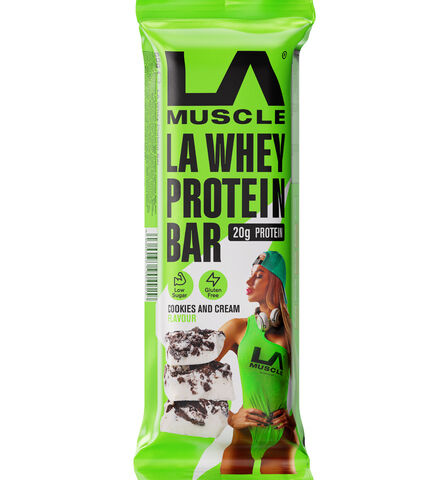The Knowledge > How To Build Muscle >
Thursday, 28th September 2017
Compound Exercises vs Isolation Exercises
By Mr Universe Neale Cranwell
By LA Muscle on 28.09.2017 12:21 pm
This article will explain the differences between a compound exercise and an isolation exercise whilst analysing each in-depth. Both compound and isolation exercises play a fundamental role in the world of bodybuilding and if you want to grow then ideally you would need to implement both.
Compound Exercises
Compound exercises are any exercise that involves the use of more than one major muscle group at a time. Typically, there is one larger muscle group that ends up doing the majority of the work, and then one or more smaller muscle groups that are recruited secondarily.
Here’s a list of the most common compound exercises along with the primary and secondary muscle groups each one targets:
·
Flat, Incline or Decline Bench Press (barbell, dumbbell or
machine)
Primary Muscle Group: Chest
Secondary Muscle Groups: Shoulders, Triceps
·
Overhead Shoulder Press (barbell, dumbbell or machine)
Primary Muscle Group: Shoulders
Secondary Muscle Group: Triceps
·
Dips (on parallel bars with slight forward lean)
Primary Muscle Group: Chest
Secondary Muscle Groups: Triceps, Shoulders
·
Dips (on parallel bars with no forward lean)
Primary Muscle Group: Triceps
Secondary Muscle Groups: Shoulders, Chest
·
Rows (barbell, dumbbell, or machine)
Primary Muscle Group: Back
Secondary Muscle Group: Biceps
·
Pull-Ups, Chin-Ups, Lat Pull-Downs (any type of grip)
Primary Muscle Group: Back
Secondary Muscle Group: Biceps
·
Deadlifts (many variations)
Primary Muscle Group: Posterior Chain (Hamstrings, Glutes, Back, etc.)
Secondary Muscle Groups: Much Of Lower Body, Much Of Upper Body
·
Squats (many variations)
Primary Muscle Group: Quads
Secondary Muscle Groups: Most Of Lower Body (Glutes/Hamstrings), Lower Back
Basically, if an exercise involves pushing, pulling, squatting or deadlifting, it’s usually training more than one major muscle group, and that makes it a compound exercise.
As you can see from the list above:
· All chest pushing/pressing exercises also use the shoulders and triceps.
· All shoulder pushing/pressing exercises also use the triceps.
· All back pulling/rowing exercises also use the biceps.
· Deadlifts and squats (and split squats, lunges, step ups, leg presses) also use a variety of lower body muscles and, in some cases, the lower and/or upper back.
How Compound Exercises Can Affect Your Planned Frequency, Recovery & Volume
Now, you may be wondering why you should care about what secondary muscle groups get trained during compound exercises. Here’s why.
You’re using a workout schedule that will allow you to train each muscle group with an optimal frequency, right?
Well, based on the information, can you see how easy it would be to unknowingly train certain muscle groups more often than you’re aiming to as a result of their secondary use during exercises that primarily target other muscles?
Plus, there’s also the issue of recovery. For example, you might train chest one day and triceps the next. In reality, you’ve trained triceps 2 days in a row (because of their secondary usage during chest exercises).
A similar issue can easily arise with pretty much every muscle group there is if you don’t plan carefully enough. This is another reason why I consider these the best workout schedules. Each one pairs muscle groups up in a way that avoids any potential problems with frequency/recovery as a result of secondary usage during compound exercises.
The same potential problem can exist for your planned volume per muscle group too. This goes back to what I’ve mentioned before about smaller muscle groups (like biceps and triceps) needing less direct volume due to how much indirect volume they get during compound exercises.
This is all stuff that needs to be taken into account when creating your workout routine. Luckily, if you’ve been following along from the beginning, it’s all stuff that has already been taken into account.
An isolation exercise is any exercise in which only one major muscle group is trained by itself. Typically, the movement is done in such a way where usage of all other muscle groups is avoided, which leaves one muscle group isolated and able to do all of the work.

Isolation Exercises
Here’s a list of the most common isolation exercises along with the muscle it isolates/trains:
·
Flat, Incline or Decline Flyes (dumbbell, cable or machine)
Muscle Group Trained: Chest
·
Lateral Raises or Front Raises (dumbbell, cable or machine)
Muscle Group Trained: Shoulders
·
Biceps Curls (barbell, dumbbell, cable or machine)
Muscle Group Trained: Biceps
·
Triceps Extensions (barbell, dumbbell, cable or machine)
Muscle Group Trained: Triceps
·
Leg Extensions
Muscle Group Trained: Quads
·
Leg Curls
Muscle Group Trained: Hamstrings
·
Calf Raises
Muscle Group Trained: Calves
Basically, if an exercise involves raising, curling or extending, it’s usually training just one major muscle group, and that makes it an isolation exercise.

So, What's Best For You?
· If your primary goal is performance related (increasing strength, improving performance, etc.), then compound exercises should comprise the majority of your workout routine. Isolation exercises should be greatly limited or possibly avoided completely.
· If your primary goal is looks related (building muscle, losing fat, getting “toned,” etc.), then compound exercises should comprise the majority of your workout routine and get your primary focus. However, a secondary focus on isolation exercises is fine and in some cases, maybe even ideal.
· If you are a beginner with ANY goal, then compound exercises should comprise the majority of your workout routine. Isolation exercises should be kept to a minimum or possibly avoided completely.






























